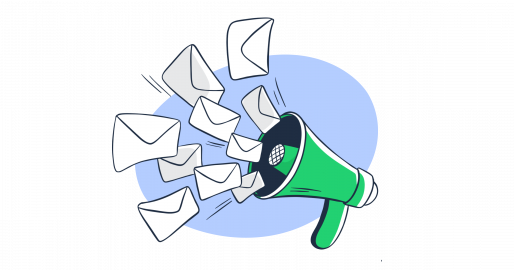Sending the same letter to a large group of people is definitely cost-efficient, but is it effective? In this post, I explain what broadcast emails are, why marketers use them, and how you can send such letters to your audience.
What is a broadcast email?
Broadcast email is a single message sent to multiple subscribers. These can be email newsletters, promotions, special deals, etc. Broadcast emails are also referred to as bulk email or mass email.
Unlike spam, broadcast messages are sent on consent and are typically very effective as they are personalized (arrow 1 on the image above) and offer curated content (arrow 2 on the image above).
The use of broadcast emails is also known as broadcast email marketing and means the same as bulk email marketing or mass email marketing.
Difference between broadcast email and autoresponder
While broadcast emails are sent to a broad audience all at once, email autoresponders are personalized responses sent to one person in reply to a specific event or action.

Marketers use bulk or broadcast emails as a tool for mass communication, typically scheduled or sent as needed. A sender manually creates an email message and schedules the email blast, personalizing content to meet the audience’s needs at that moment. Broadcast emails aim to inform subscribers, promote deals, and drive conversions, making them a key part of marketing emails.
In contrast, autoresponders (also known as user-triggered or transactional emails) are automated, triggered emails sent by an app or a website. Users get such emails after a specific action or event, such as signing up for a newsletter, making a purchase, returning a product, or completing a form. Autoresponders are typically based on standard templates. Their main goal is to nurture leads, guide users through a sales funnel, or maintain ongoing engagement with the audience.
Here are the main differences between broadcast emails and autoresponders:
| Broadcasting | Autoresponder | |
| Creation | Manual by a person | Automated by a system |
| Timing | One-time | – Recurrent – Triggered by a user action |
| Recipients | Many | One |
| Purpose | Provide updates, promotions, newsletters, etc. | Provide personalized instructions, individual information on a user’s account, transaction confirmation, etc. |
| Examples | Newsletters, company updates, promo, discount season. | Welcome letter, password reset instruction, purchase confirmation, birthday congratulation. |
Examples of broadcast emails
Businesses across various industries worldwide use bulk emails to communicate with their audiences. We get dozens of them every day. Here are some broadcast email examples from my Inbox.
Sephora deals
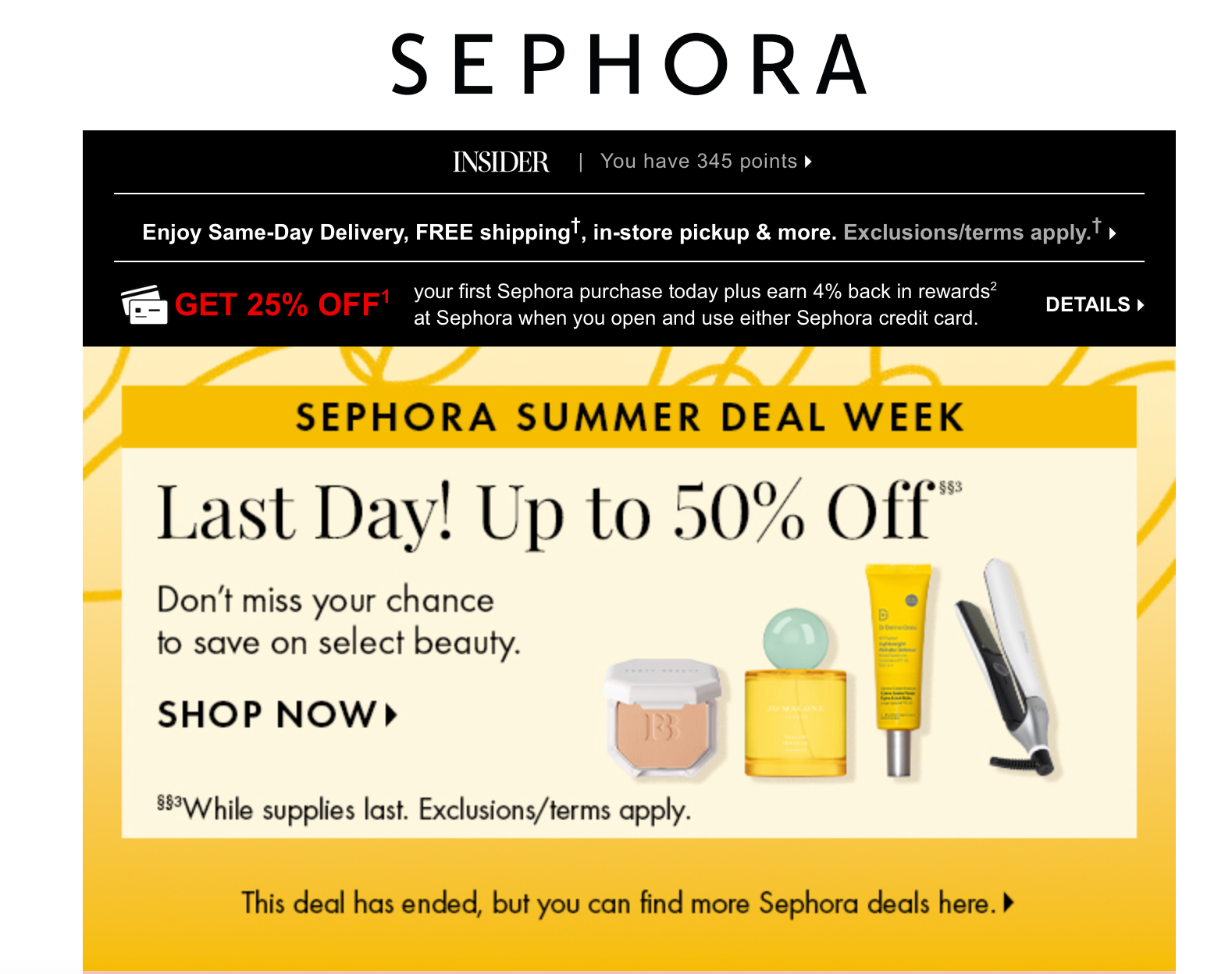
Every other week, Sephora, a famous luxury cosmetics retailer, sends mass emails about current discounts and deals to its subscribers.
Audible 2-for-1 sale

Audible is a popular subscription-based audiobook service owned by Amazon. Users pay a monthly subscription fee that provides them with one credit, typically used to purchase one audiobook. Occasionally, the service offers sales where users can get two books for one credit.
Grammarly policy update

Grammarly is a digital writing assistant that helps users improve their writing. It operates on a subscription basis and requires users to create personal accounts. Grammarly stores users’ data and follows strict privacy policies to keep this information safe. The service informs users of any updates and changes whenever they occur.
Lisa Eldridge – new product release
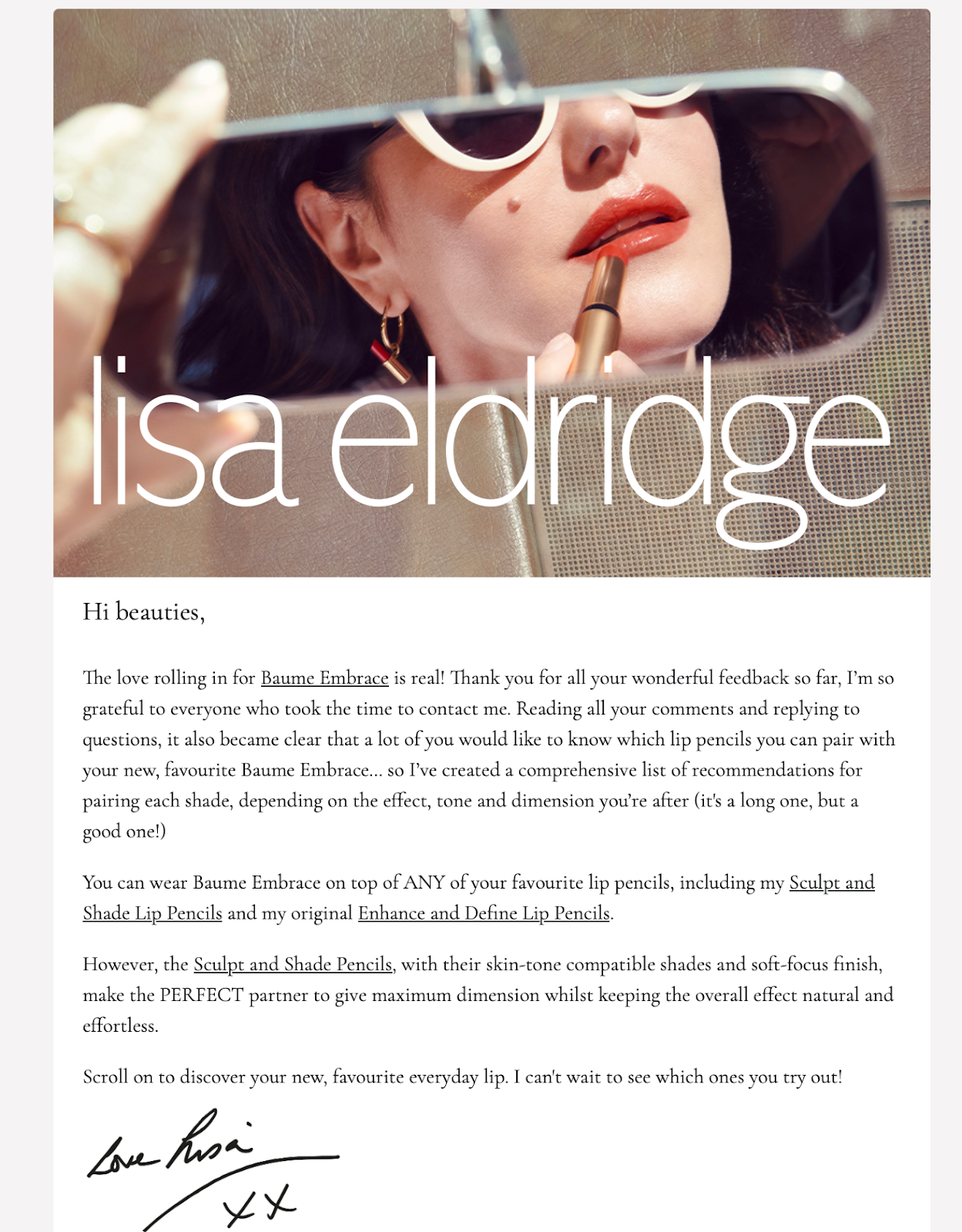
Lisa Eldridge, a famous makeup artist, launched her own lipstick line in 2018. Since then, she has expanded the range of products, announcing these updates via email to her wide fan base.
7 Types and use cases of broadcast emails
Broadcast emails serve various purposes and come in different forms. There is no strict classification for these emails since each type is designed to meet specific marketing objectives. They can accomplish various tasks, and new use cases are constantly emerging.
In this post, I have categorized broadcast emails into seven types. However, there may see them overlapping or a need to further divide certain types, as they may appear similar but serve different purposes.
Newsletters
Businesses send email newsletters to keep subscribers informed about company updates, industry news, and valuable content. These emails may include blog posts, info on upcoming events, product launches, and exclusive offers.
Businesses send newsletters regularly, every week, month, or quarter, to maintain consistent communication with their audience.
The rule of thumb here is to personalize and tailor the newsletter content to drive traffic to their websites, increase brand loyalty, and encourage repeat deals.
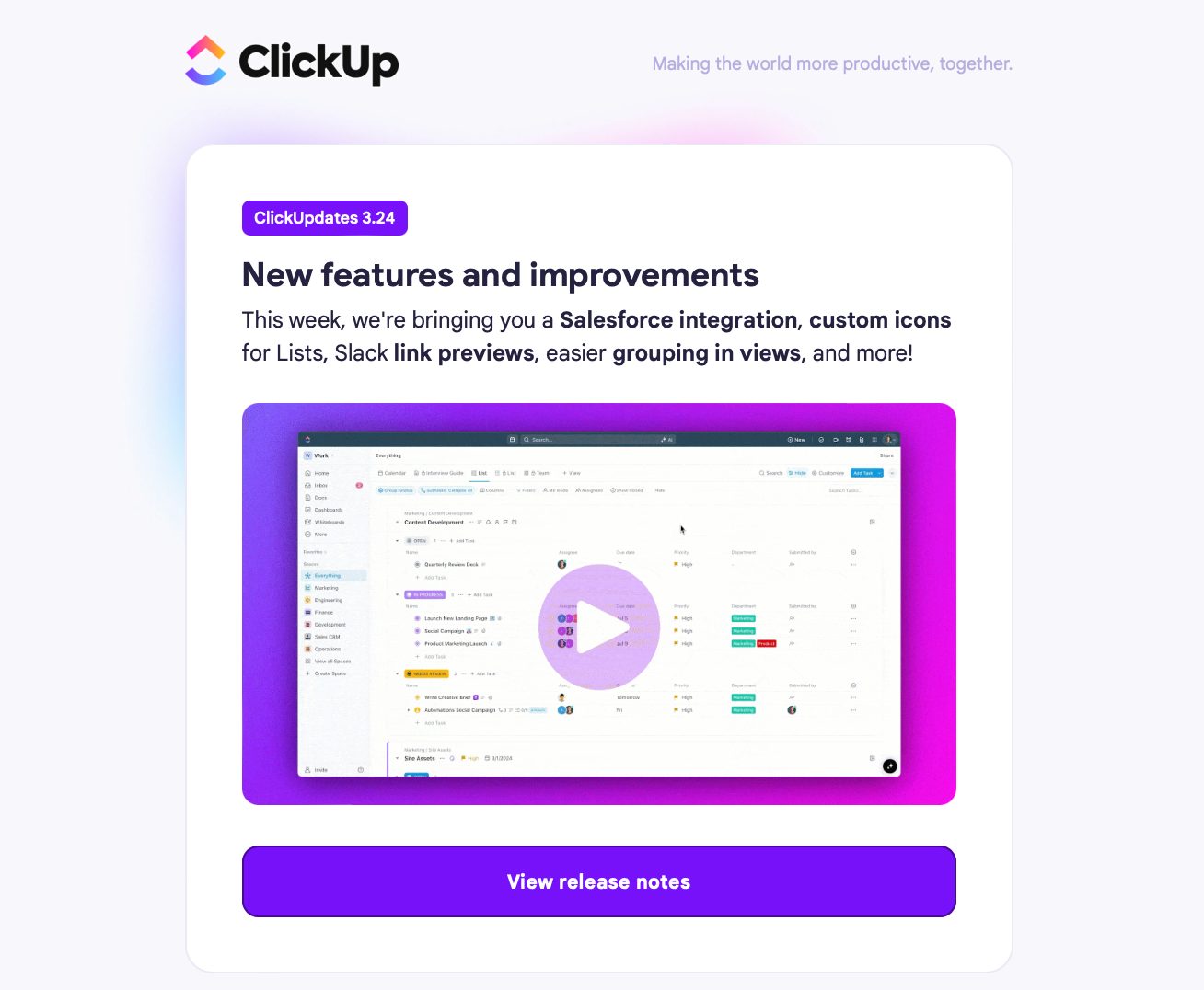
Promotional emails
Companies send promotional email messages to bring attention to their special offers, discounts, and exclusive deals.
These emails are designed to create a sense of urgency (with all these “Only today” and “2 pairs left in stock”), encouraging recipients to act quickly. Promotional emails often include eye-catching visuals, compelling call-to-action buttons, and personalized recommendations to enhance their appeal and effectiveness.

Invitations
Businesses use emails to inform and invite subscribers to webinars, conferences, local gatherings, or other online or offline events.
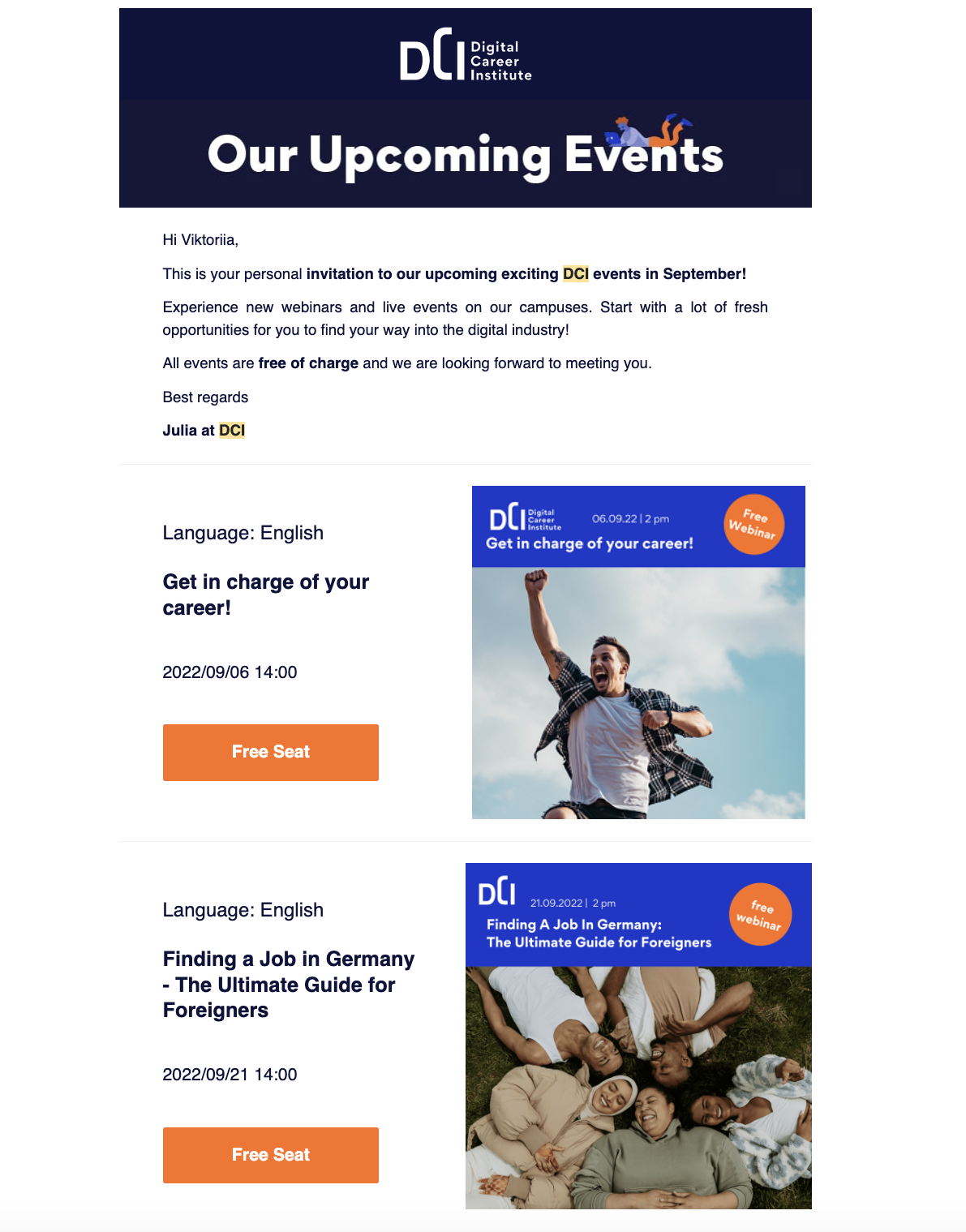
Such emails often include details about the event, such as the date, time, location, and agenda of the meeting, speakers, or special activities. Also, they highlight the benefits a person can get from participating in an event.
Product announcements
Product announcement emails are used to inform subscribers and customers about new product launches, feature releases, or updates. Businesses send such emails to generate excitement and raise awareness about the latest offerings from a company.
In a product announcement email, companies often highlight the benefits and unique selling points of the new product or feature. They also explain how a new feature or update can solve a problem or offer something new and innovative. This information helps potential customers understand the value of the new/updated product and drives them to take action, such as purchasing something or visiting the company’s website.

Surveys and feedback requests
Companies often gather customer feedback and opinions on their products, services, and overall experiences. This way they can make informed improvements to their offerings.
The most common surveys companies launch include:
- Customer satisfaction surveys to measure how satisfied customers are with a product, service, or experience.
- Product feedback surveys to gather detailed opinions about a specific product, its functionality, and design.
- Service feedback surveys to focus on the quality of customer service interactions.
- Market research surveys to understand broader market trends and customer preferences.
Please note that surveys might also be sent as autoresponder emails after a product return or a product delivery, like this email from the FortunateOne brand.
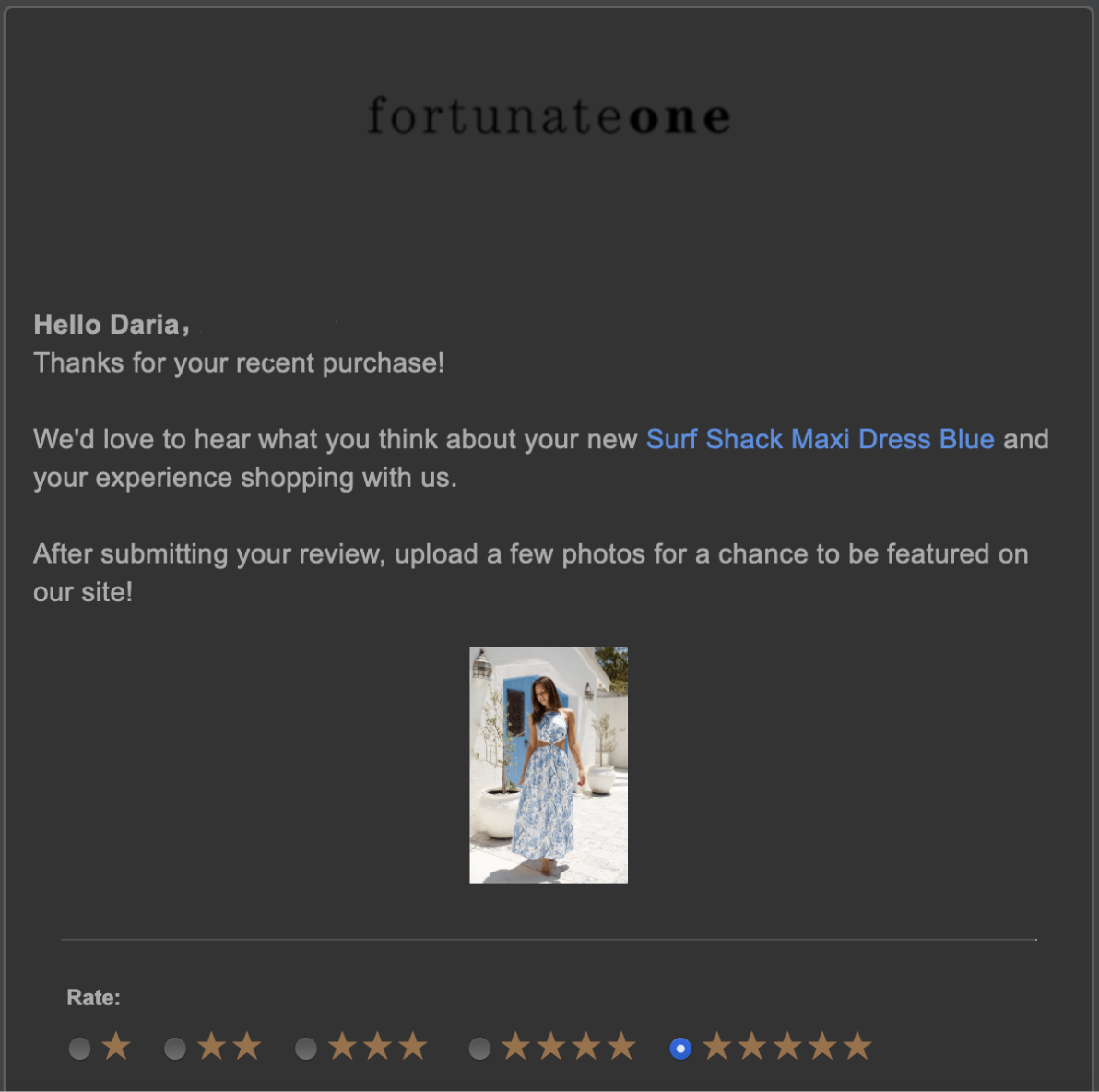
Content distribution
Content distribution emails aim to educate and engage the audience by sharing valuable content such as blog posts, whitepapers, and case studies.
These emails help position companies as industry leaders by providing relevant and high-quality information. For example, a tech company might send an email featuring its latest blog post on AI trends, a whitepaper on cybersecurity best practices, or a case study showcasing a successful client project.
By regularly sharing valuable content, businesses can build trust and non-intrusively remind clients about themselves.
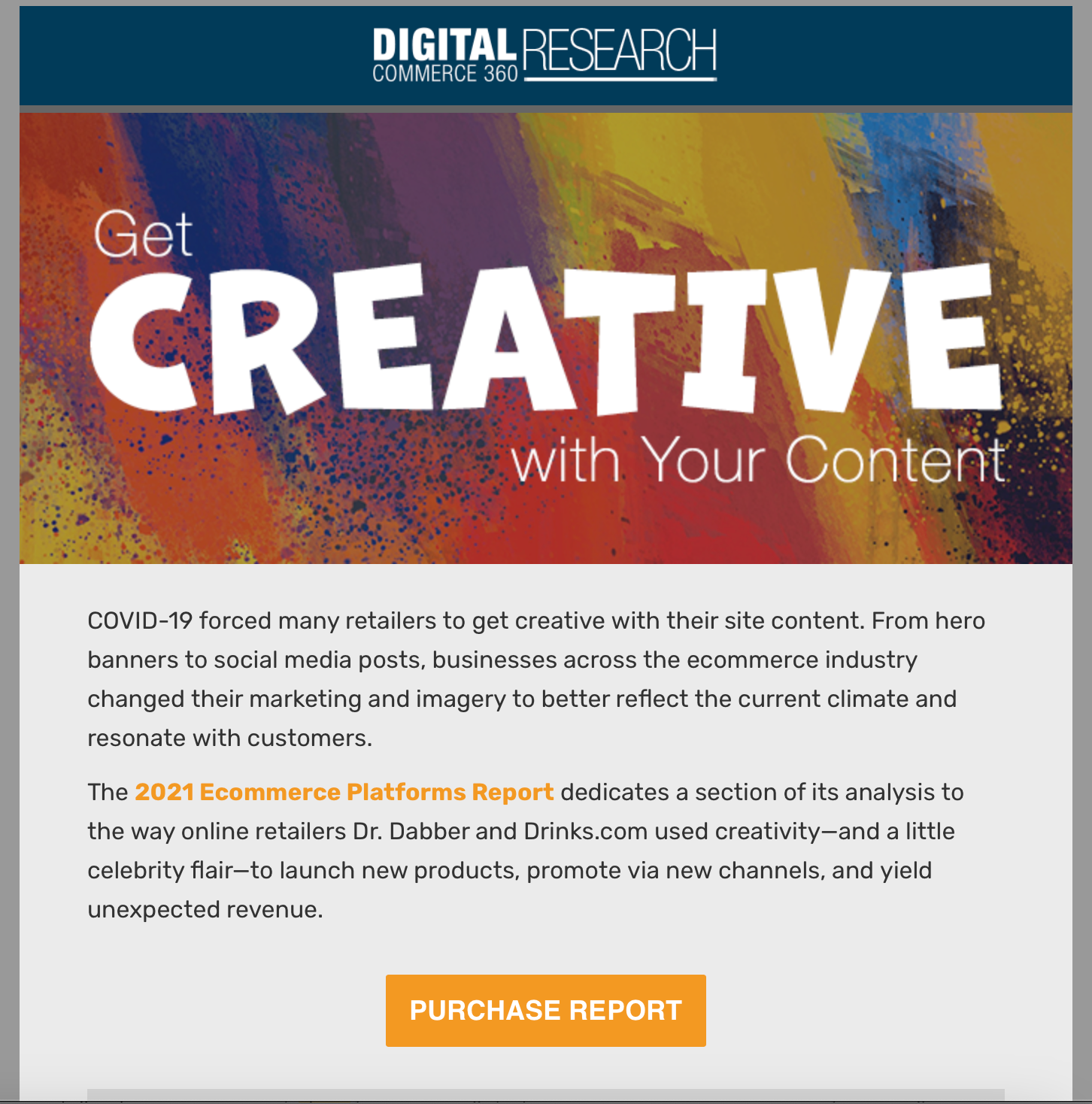
Seasonal greetings and holiday emails
Retailers love these mass emails and never miss a chance to greet their customers and offer a sale (yes, I’m talking about Christmas offers and Black Friday madness).
Such emails help sell more and enhance brand’s online visibility, especially if it’s a personalized greeting rather than just an upsell offer. By acknowledging significant holidays, brands create a sense of connection and goodwill.

What are the benefits and drawbacks of broadcast emails?
Now the juiciest part. Are broadcast/bulk emails so efficient (given their cost effectiveness) as they say, or is it a myth? Let’s take a look at the honest review of bulk email benefits and drawbacks.
Benefits of broadcast emails
Mass emails offer several significant advantages for businesses that can make you want to use the technology for your business:
- Cost-effectiveness is one of the biggest advantages, especially when compared to traditional print or TV advertising. The main expenses include email marketing software like email-sending platform subscription and content creation. Many platforms offer email templates to simplify and speed up the content creation process. Also, they may offer list management, marketing automation, testing, and analytics tools, which further reduce the cost.
- Wide reach. Mass emails are an excellent tool for announcements, promotions and updates, or any other information that you would like to convey to a large number of your subscribers.
- Measurable results. Email Delivery Platforms like Mailtrap provide detailed analytics on open, click rates and conversions. This data can help you understand the effectiveness of your broadcast campaigns and make data-driven decisions on your email marketing strategy.
- Immediate impact. Bulk emails can deliver information instantly, making them ideal for time-sensitive announcements, such as flash sales or urgent updates.
- Improved customer relationships. Regularly sending informative and valuable content helps maintain consistent communication with customers, creating loyalty and trust.
- Customizable content. You can tailor the content of mass emails to suit different segments of your audience. This way, you can ensure the information is relevant and engaging for each group of recipients.
- Automation. Many email marketing tools offer automation features to schedule email sending in advance. By sending relevant emails regularly at the most suitable time for recipients, you can create stronger bonds with your audience and build a loyal community for your brand.
Drawbacks of broadcast emails
If you’ve ever clicked on a link in an email offering special deals and ended up making a purchase, you understand the power of mass emails. However, they only work when done correctly. Otherwise, broadcast emails might damage your relationship with subscribers and hurt your business. Here’s how:
- Risk of being marked as spam. If you send emails too frequently or without sufficient relevance, subscribers can perceive them as spam. When many recipients unsubscribe it damages your sender’s reputation and reduces email deliverability.
- Limited personalization. Mass emails can be personalized to some extent, yet, they often lack the deep personalization that more targeted email campaigns can offer. As a result, you get lower engagement rates compared to emails that are highly tailored to individual recipient preferences and behaviors.
- Broad content. Due to their broad audience, mass emails tend to have more general content, which may not be as compelling or relevant to all recipients. This is why emails usually have lower open and click-through rates.
- Deliverability issues. Mindless dispatches of broadcasting emails to a large audience simultaneously can trigger spam filters. If this happens, your emails will end up in the Spam folder. In the future, this will reduce your email deliverability, making it harder to reach your audience.
- Over-reliance on automation. While automation can streamline the process, it can also lead to a “set and forget” mentality, where emails are sent without strict supervision, continuous optimization, and improvement based on performance data and feedback.
- Resource intensive. Yes, broadcast messages cost less than some other marketing approaches yet they are labor and time-consuming at the preparatory stage. Developing a strategy, planning content creation well in advance, and designing compelling messages demand time and effort. Additionally, ongoing tasks such as segmenting the email list, performing A/B testing, and analyzing campaign performance to optimize future emails can further add to the workload. This resource-intensive process is essential for an effective and successful broadcast campaign.
Email broadcasting tools
There are many email-sending platforms out there. To choose the best one for yourself, you need to focus on those providers, who offer email broadcast capabilities. Here’s a comparison of the most popular options:
| Mailtrap | SendGrid | Mailchimp | Brevo | Mailjet | |
| Cost* per 1K email in $ | 0.40 | 0.90 | 0.50 | 0.67 | 0.94 |
| Email/Contact limits | 5M/Unlimited | 1M/200K | 3M/200K | 1M/Unlimited | 500K/Unlimited |
| Ease of use for Marketers** | ★★★★★ | ★★★☆☆ | ★★★★★ | ★★★★☆ | ★★★★☆ |
*The cost per email is calculated based on the most expensive plan indicated on the service provider’s website. Keep in mind that with lower (cheaper) plans, the cost per email tends to be higher.
**I used a 5-star grading system, where 5 represents the most user-friendly experience and 0 represents the least user-friendly.
How to send broadcast emails?
Of course, I’ll show you how to send broadcast emails with Mailtrap. It’s pretty easy, and the marketing suite is simple to use! The only condition is that you should register and verify your sending domain first. But don’t worry—it won’t take long, and I’m here to walk you through this process!
With Mailtrap, you can quickly set everything up, create an email using a template or drag-and-drop editor, and send it to your subscribers within minutes. Trust me, it’s that simple!
Step 1. Set up an account in Mailtrap
Start by signing up for a Mailtrap account via Google, GitHub, Office 365 account, or your email. Create a password and you are ready to go!
Step 2. Add and verify your sending domain
Set up the sending infrastructure by adding and verifying the domain you own.
First, add your domain or subdomain, you want to use.
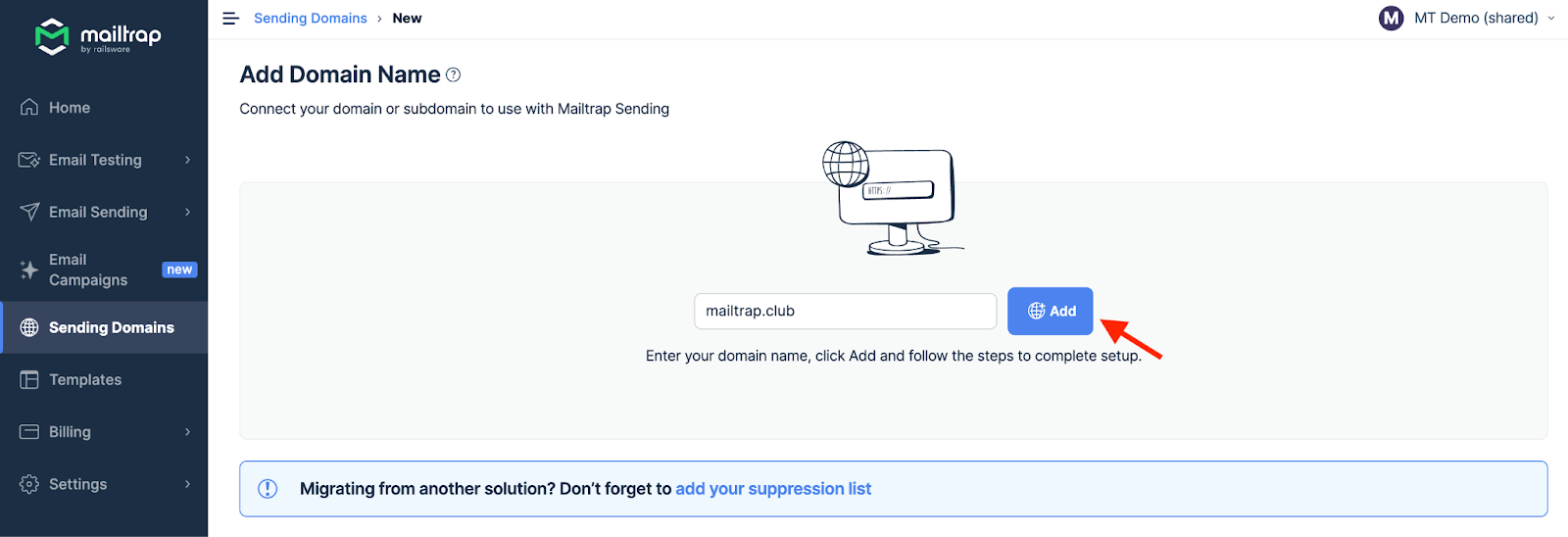
Next, add the DNS records provided by Mailtrap. Log in to your domain provider account, select the necessary domain and find the DNS record information. If your domain is hosted on GoDaddy, open the chosen domain in your account, go to the “Additional Setting”’ tab, and click the “Manage DNS” button.
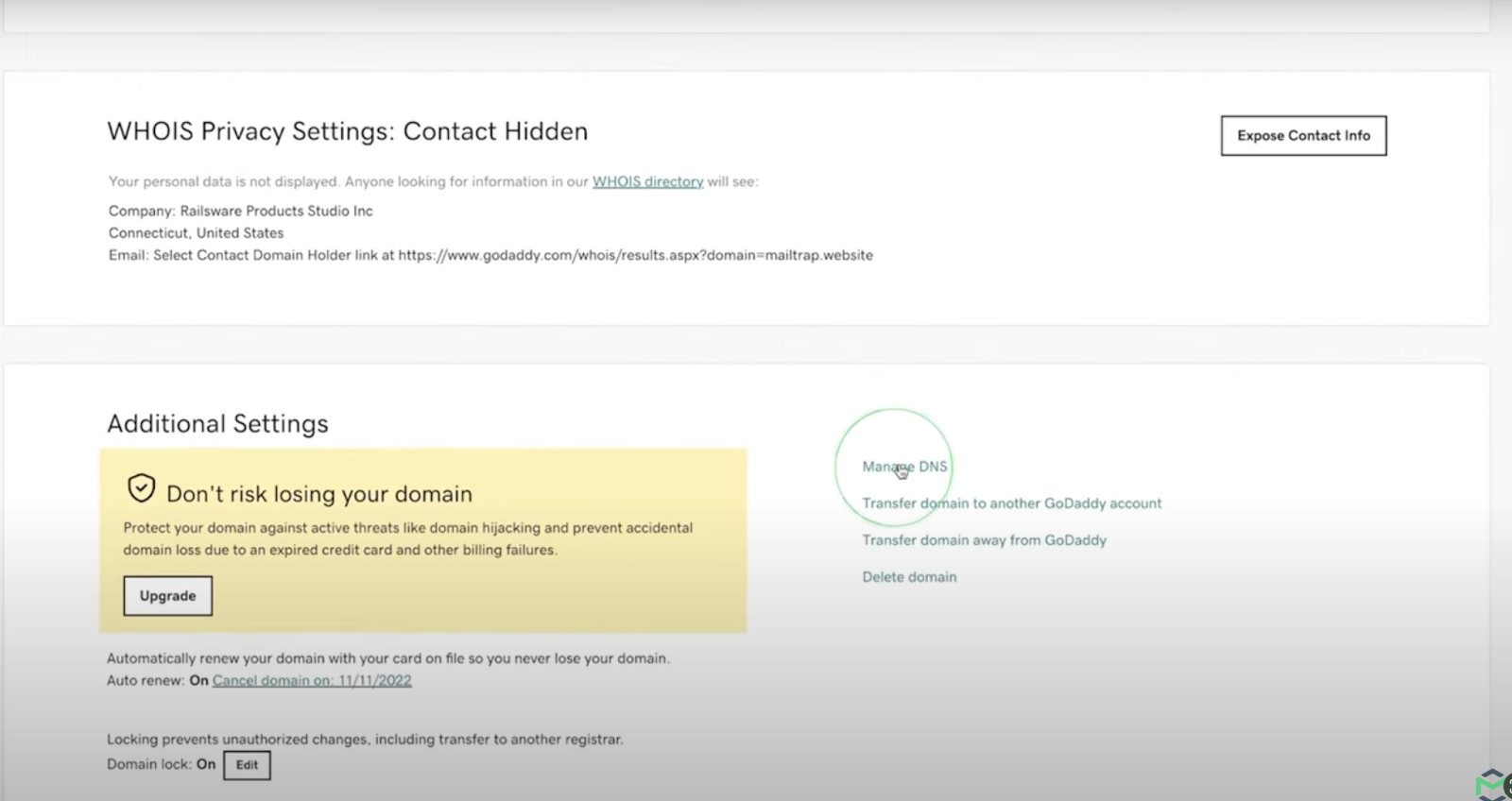
Add the DNS records provided by Mailtrap and hit the “Verify all” button.
Step 3. Create a marketing campaign
Open the “Email Marketing” tap and click the “Open new campaign” button.
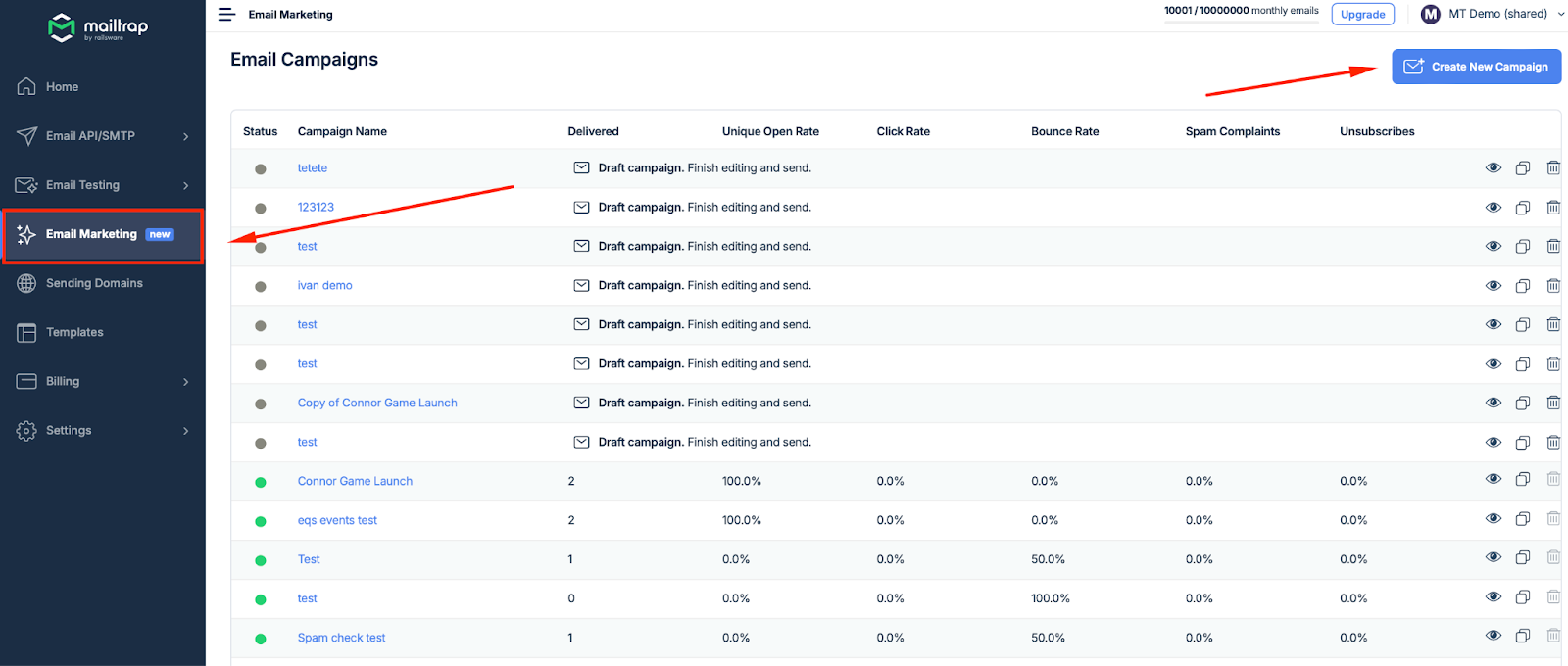
Fill in all the necessary fields and hit “Continue”
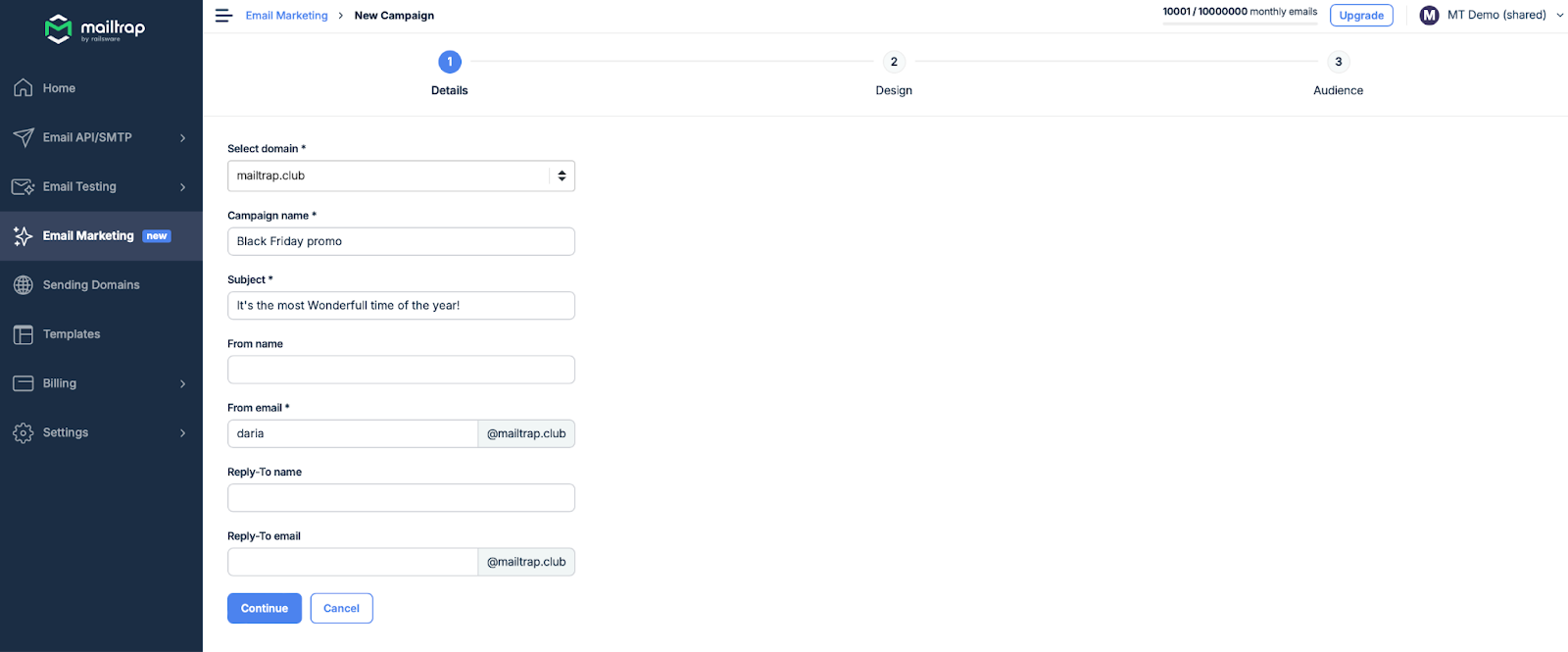
Select an existing template or create one from scratch.
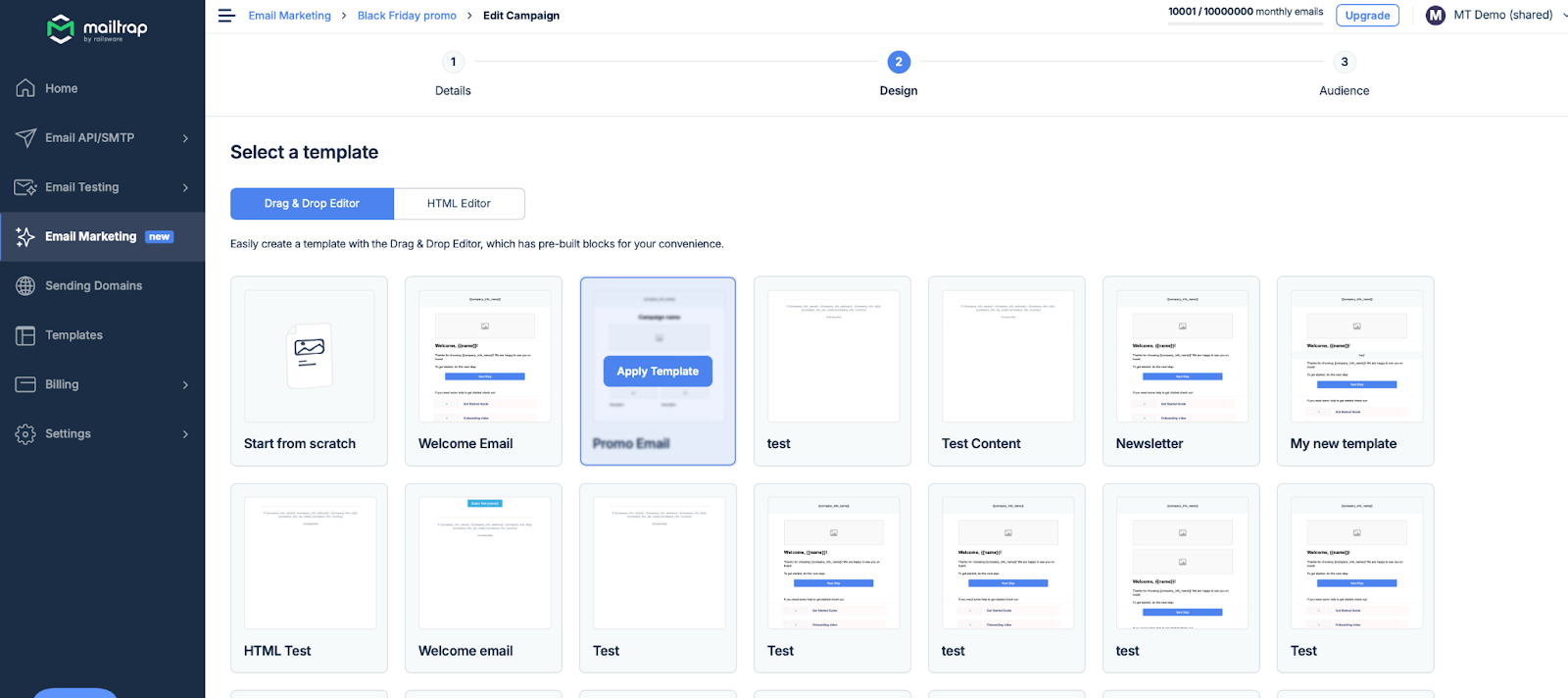
Add the content and press the “Send Test” button. In a few seconds, the email will land in the inbox of the email address you used to log in to Mailtrap. Check the content, formatting, and overall appearance to make sure everything looks perfect.
Like what you see? If so, click the “Continue” button to proceed to importing your subscriber list.
Most email lists are stored in CSV files. Download the CSV template to ensure your file is correctly formatted, or use this template to complete your user database. Once your list is ready, add it and click “Import recipients.”
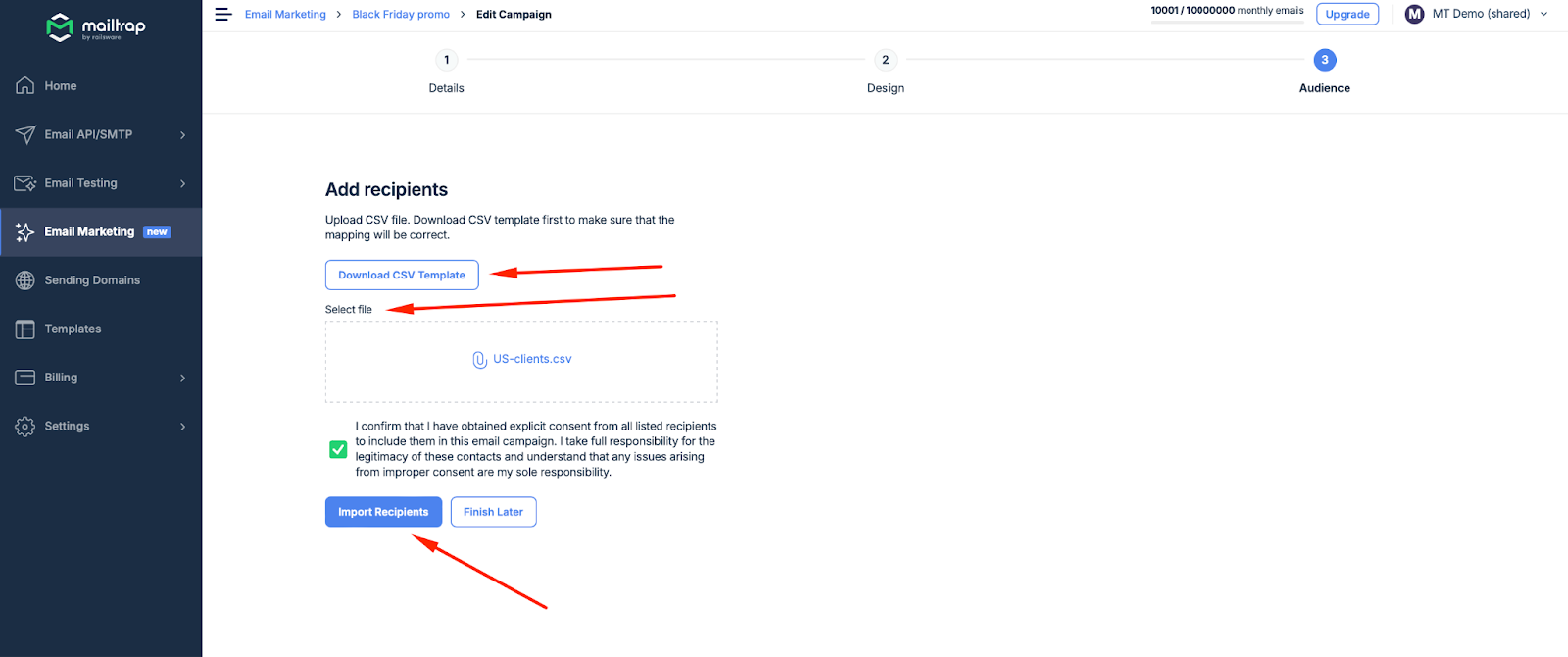
Review your CSV mapping and select the variables that will appear in each email. Once everything is set, confirm the mapping.

The import is complete. If any errors occur, you’ll see failed imports listed. You can go back to the mapping step to identify and fix the issue.
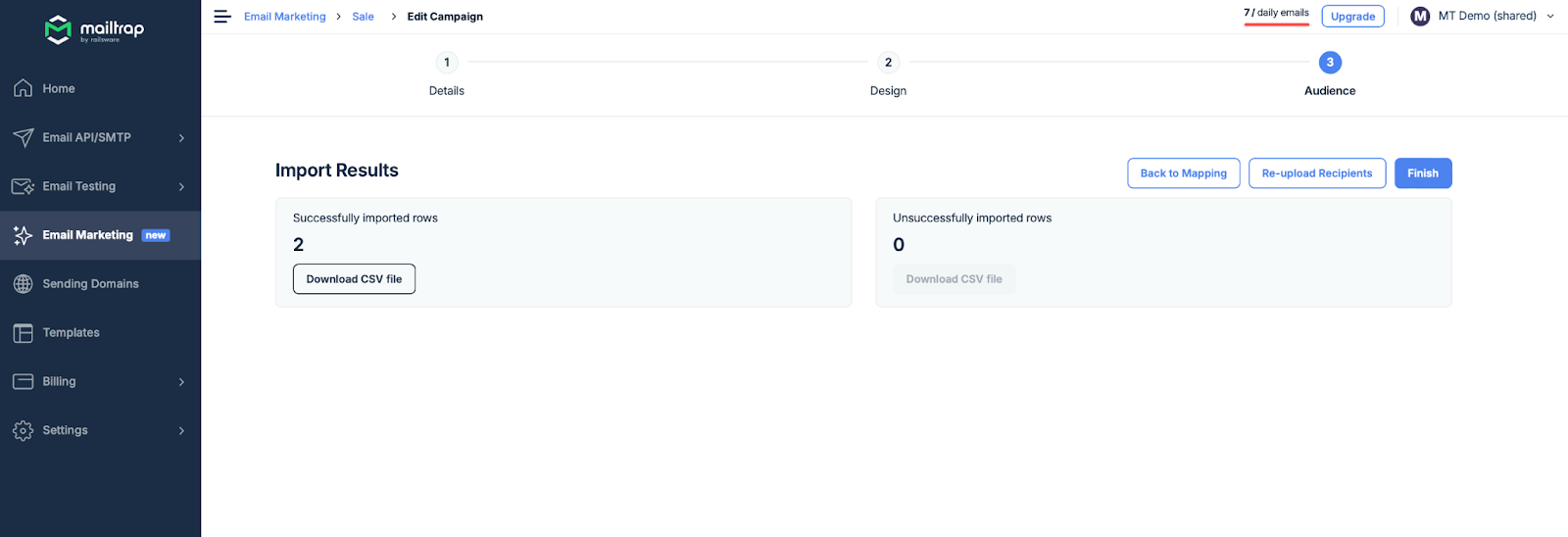
Hit the “Finish” button. Now you see all the data of your broadcast email campaign. From here, you can choose to send another test email, send an email now, or schedule it for later.
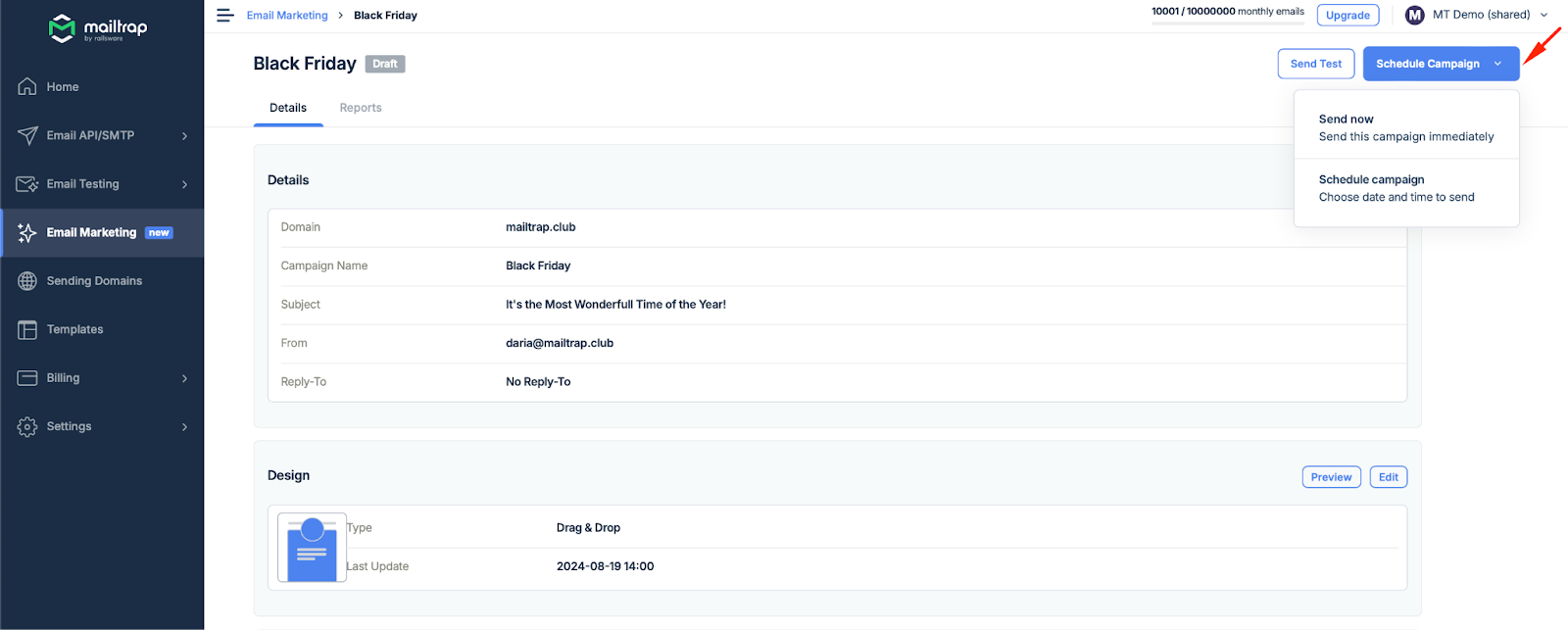
While scheduling, please note that the time zone is set to UTC
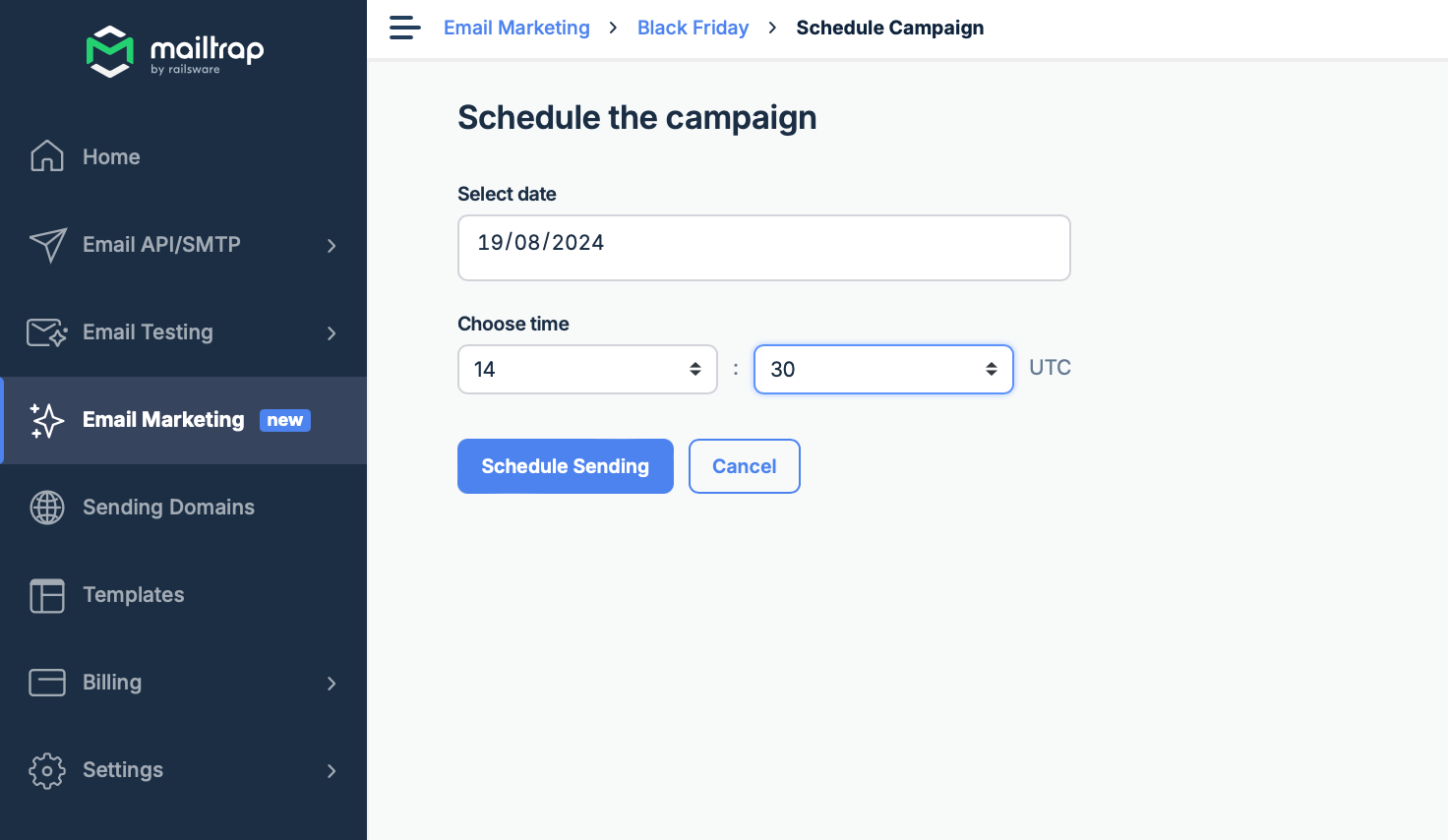
Confirm the sending and wait for emails to be dispatched. In the set date and time, your recipients will get your emails.
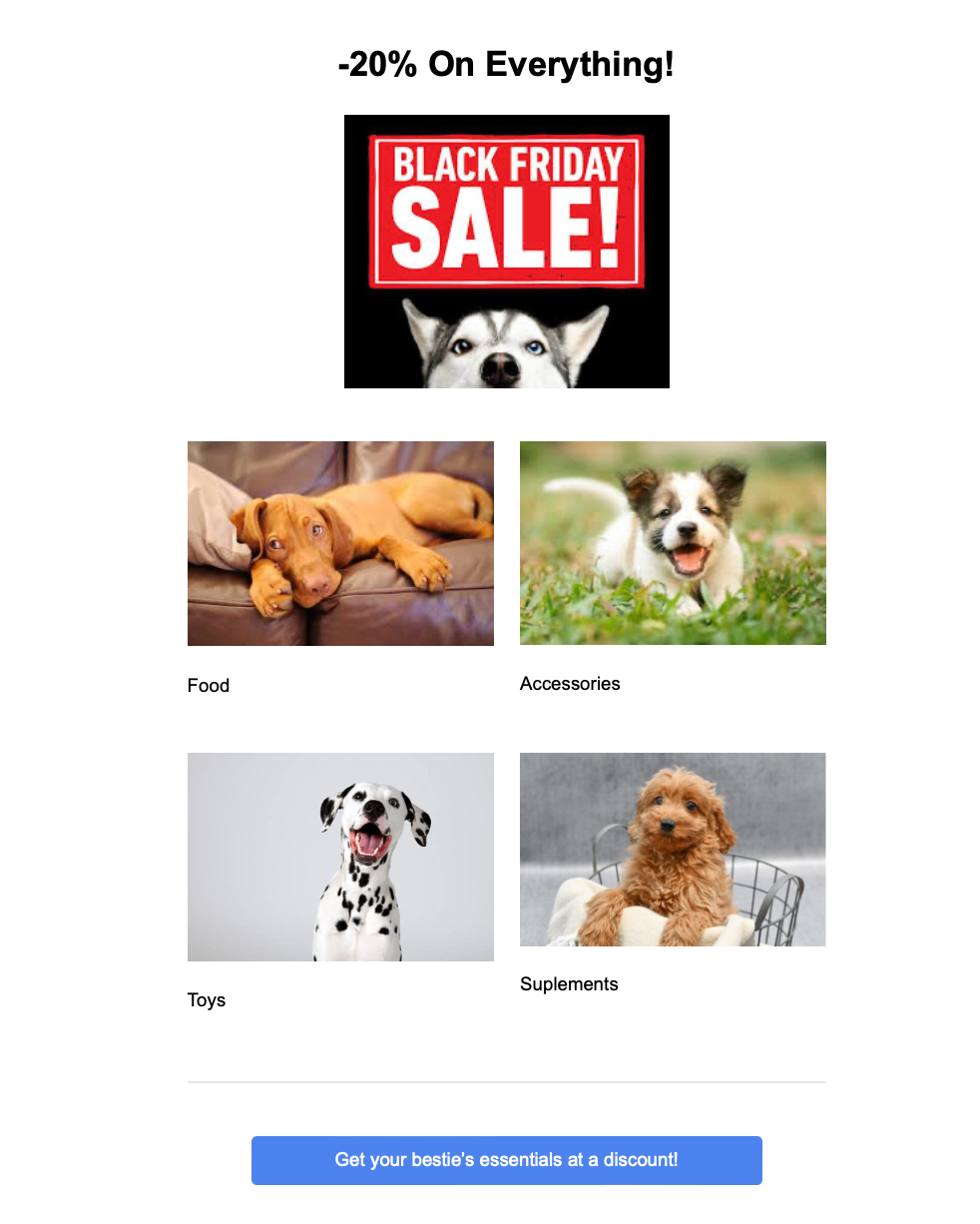
Email broadcasting best practices
Mass emailing can be very effective for your business if you follow industry best practices. Here are the main ones to always keep in mind.
Segment the audience
Unless you run a very specific, niche business in one particular location, it’s better to segment your subscribers. Divide your contact list into groups based on demographics, behavior, or interests to send more relevant content.
Personalize emails
The least that you can do is to refer to a subscriber by name in every email. However, you can go further and pick the content based on their past interactions, preferences, and behavior.
For example, send product recommendations that align with clients’ previous purchases or interests, and use dynamic content to ensure that each recipient sees the most relevant offers.
Keep it short and focused
If your store receives new products, highlight 5-7 in a newsletter rather than overwhelming subscribers with the entire collection. The same goes for news, updates, and events. Show some diversity, but avoid bombarding users with too much information at once.
Be consistent
Bulk emails are the most effective when sent regularly and at the right time. Start with a thorough content plan that includes your goals, frequency of communication, and content types you’ll be using.
Spend some time analyzing when your audience is most likely to open and read your emails. It might take a bit of experimenting, but once you nail it down, you’ll see better engagement and results.
Consistency is also crucial for your sender’s reputation. Internet and email providers monitor your sending habits to detect spam. Irregular or sporadic email activity can raise red flags, potentially harming your deliverability rates.
By consistently sending well-timed, relevant emails, you build trust not only with your audience but also with email providers, increasing the chances that your emails will land in inboxes rather than the spam folder
Add a straightforward call to action
Not every email needs a CTA. But if you want readers to take action, make it sound short, straightforward, and beneficial.
A/B Testing
A/B testing is the holy grail for all sorts of emails you plan to send. By experimenting with subject lines, images, fonts, and even tone of voice, you can identify what resonates best with your audience and significantly improve your email performance.
If you plan a really important email campaign and you don’t want your actual users to see it too early, you can use some usability testing tools to gather insights on how the test audience navigates through the email and whether key elements (like CTAs) are noticed.
Schedule regular email marketing audit
By regularly reviewing your email campaigns, you can analyze the number of customers who open your emails, track your expenses, and pinpoint what is not performing as expected. This process also assists in identifying areas where resources may be wasted. With these insights, you can develop more robust and efficient email campaigns in the future.
Conclusion
In this post, I have covered the most common questions marketers have about email broadcasting. If you plan to closely work with emails in your application, then you might also need to check out the following blog posts:

